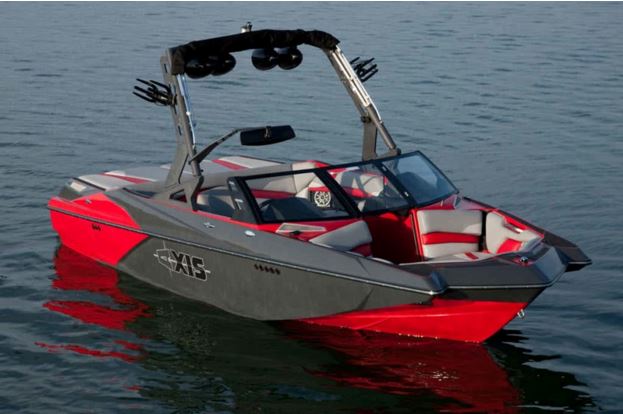Understanding 4D Batteries vs. 8D Batteries: A Simple Guide
Terms like “4D” and “8D” can be confusing regarding batteries. This article will explain what these types mean, their differences, and their applications. Additionally, we’ll compare the 4d battery vs 8d, which are popular lithium-ion battery types used in various devices.
What Are 4D and 8D Batteries?
4D Batteries
4D batteries are typically more extensive and more powerful than standard batteries. They are designed to provide high energy output, making them suitable for applications requiring much power. You’ll often find 4D batteries in industrial equipment, large-scale energy storage systems, and electric vehicles.
One of the key features of 4D batteries is their ability to deliver a stable energy supply over extended periods. This makes them excellent for powering heavy machinery or as backup power sources for extensive facilities.
8D Batteries
8D batteries are more significant than 4D batteries designed for high-performance applications. They can hold more energy and are used in demanding situations like boats, buses, and large vehicles. These batteries are also commonly found in applications requiring a reliable power source, such as telecom systems and emergency backup setups.
The “D” in both 4D and 8D stands for the battery’s physical size. The number preceding the “D” indicates its capacity and power output. An 8D battery can provide more energy than a 4D battery, making it suitable for even more intensive uses.
Comparing 4D and 8D Batteries
Capacity and Size
The main difference between 4D and 8D batteries is their size and capacity. While both are larger than typical car batteries, an 8D battery has a greater energy capacity. This means that if you need more power for longer durations, an 8D battery is the better choice.
Application Suitability
- 4D Batteries: Ideal for industrial machinery and backup power systems. They provide solid energy support for applications that don’t require excessive power.
- 8D Batteries: Best for high-demand scenarios, such as large vehicles and heavy-duty equipment. Their ability to store more energy makes them more versatile for demanding tasks.
Weight and Portability
Due to their size, both types of batteries can be heavy and difficult to transport. However, 8D batteries are significantly heavier than 4D batteries. If portability is a concern, it’s essential to consider the weight when choosing between the two.
Exploring 4d battery vs 8d
While discussing different battery types, let’s look at the 4d battery vs 8d. These two types are often compared due to their similarities but have fundamental differences.
What Are 18650 vs 14500 battery?
- 18650 Batteries: These are cylindrical lithium-ion batteries measuring 18mm in diameter and 65mm in length. They are widely used in laptops, electric vehicles, and many other portable electronics due to their high energy density and longevity.
- 14500 Batteries: These batteries are also cylindrical, measuring 14mm in diameter and 50mm in length. They are similar in voltage to 18650 batteries but have a lower capacity. You’ll find them in smaller devices, like flashlights and portable gadgets.
Capacity and Performance
Eighteen thousand six hundred fifty batteries typically offer a higher capacity than 14500 batteries, which means they can store more energy and power devices for longer. If you’re looking for a battery that lasts longer between charges, the 18650 is usually the better option.
Applications
- 18650 Batteries: Commonly found in larger devices requiring more energy, such as electric vehicles, power tools, and high-performance flashlights.
- 14500 Batteries: Best suited for smaller devices that require less power, like smaller flashlights, remote controls, and certain electronic toys.
Benefits of Using 4d battery vs 8d
Durability
Both 4D and 8D batteries are designed to withstand harsh conditions. They are built to last, making them a reliable choice for applications that require consistent performance.
Maintenance
These batteries often require less maintenance than smaller battery types. This is especially true for sealed batteries, which are designed to be maintenance-free. Users can enjoy peace of mind knowing they won’t need to check or refill the battery regularly.
Versatility
Both types of batteries can be used in various applications. Their versatility makes them a popular choice across different sectors, from industrial machinery to backup power supplies.
Choosing the Right Battery for Your Needs
Consider your specific power needs and application when deciding 18650 vs 14500 battery. Here are some questions to ask:
- What is the power requirement of your application? If you need a lot of energy for extended periods, an 8D battery may be the best choice.
- How much space do you have? If space is limited, a 4D battery might fit better while providing ample power.
- What is your budget? Generally, larger batteries like the 8D will be more expensive than 4D batteries. Ensure you choose a battery that fits your financial plan while meeting your power needs.
- What are the environmental conditions? If you need a battery for outdoor use or in harsh environments, make sure the one you choose can handle those conditions.
Conclusion
In summary, 4D and 8D batteries are essential in various applications, with distinct advantages depending on your power needs. While 4D batteries offer a solid option for moderate energy requirements, 8D batteries excel in high-demand situations.
Additionally, the comparison 18650 vs 14500 battery illustrates the importance of selecting the proper battery size and type for your devices. By understanding the differences and applications of these batteries, you can make more informed choices for your energy needs. Knowing which battery to use can make all the difference whether you’re powering industrial machinery, electric vehicles, or portable gadgets.

![How to Identify Core Business Problems in Case Interviews [Pro Tips]](https://businesnewswire.com/wp-content/uploads/2024/10/ok-35.jpg)

